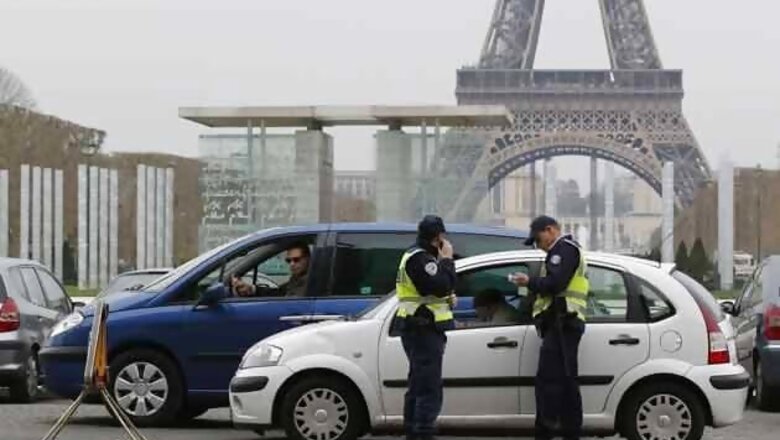
views
As an idea, it was sound. But a day after Paris started allowing odd and even-numbered cars on its streets on alternate days on March 17, city authorities decided not to continue with it for the moment. The question is, can India implement such a system on its city streets?
Paris, which has faced increasing vehicle traffic and unseasonal smog levels over time, has been trying to deal with clogged streets and pollution for a while now, and decided to start this measure to ease some of the pressure. It still lags behind other world cities, even outside Europe, in dealing with traffic congestion.
Athens, which introduced a similar alternate-number driving system on its roads several years ago, has been notably successful at this. In Brazil, Sao Paolo, one of the most polluted Latin American megacities where enforcement of civic norms is not an easy matter, has an even more strict system under which cars are designated four days in a month when they cannot be driven, particularly during rush hour. Beijing successfully used the alternate-number system during the 2008 Olympics.
In Paris this time, the driving restrictions were imposed over the entire city and, significantly, 22 of its suburbs. However, while its citizens are more law-abiding than, say, Sao Paolo, one out of every ten driver on the streets was found in violation of the rule, with 4000 drivers being fined and 27 cars impounded by the end of the day, even though the rules had been relaxed for several categories, including electrical and hybrid cars, and for drivers ferrying three or more passengers, although bikes were included in the ban.
Clearly, while a good idea on paper, there were many compulsions which caused even those citizens who agreed to the idea to break the rule and hit the road. This might have led to the civic authority's decision not to continue with the system for the time being.
What lessons, then, does this system have for India's roads at a time when vehicular traffic is increasing in exponential rates and far outstripping infrastructure growth? The system could be enforced, provided there is popular understanding and support for it. However, the traffic police here needs to be efficient enough to ensure cars do not break the rule with impunity, and that might be too high an expectation. In congested parts of big cities, such as Delhi's Old City and its surroundings, vehicular restrictions could only be enforced more than a decade ago after police barricaded entry and exit routs and compelled drivers to follow the no car zone ruling. So, on major and arterial roads, suburbs and other areas where barricades can't be an option, enforcing such a norm will be a difficult matter if popular support does not exist. The fact that this idea does work has been demonstrated by cities around the world. But the Paris experience demonstrates, once again, that when it comes to civic authority and the requirements of the public, a good idea might not always translate into successful initiatives.



















Comments
0 comment